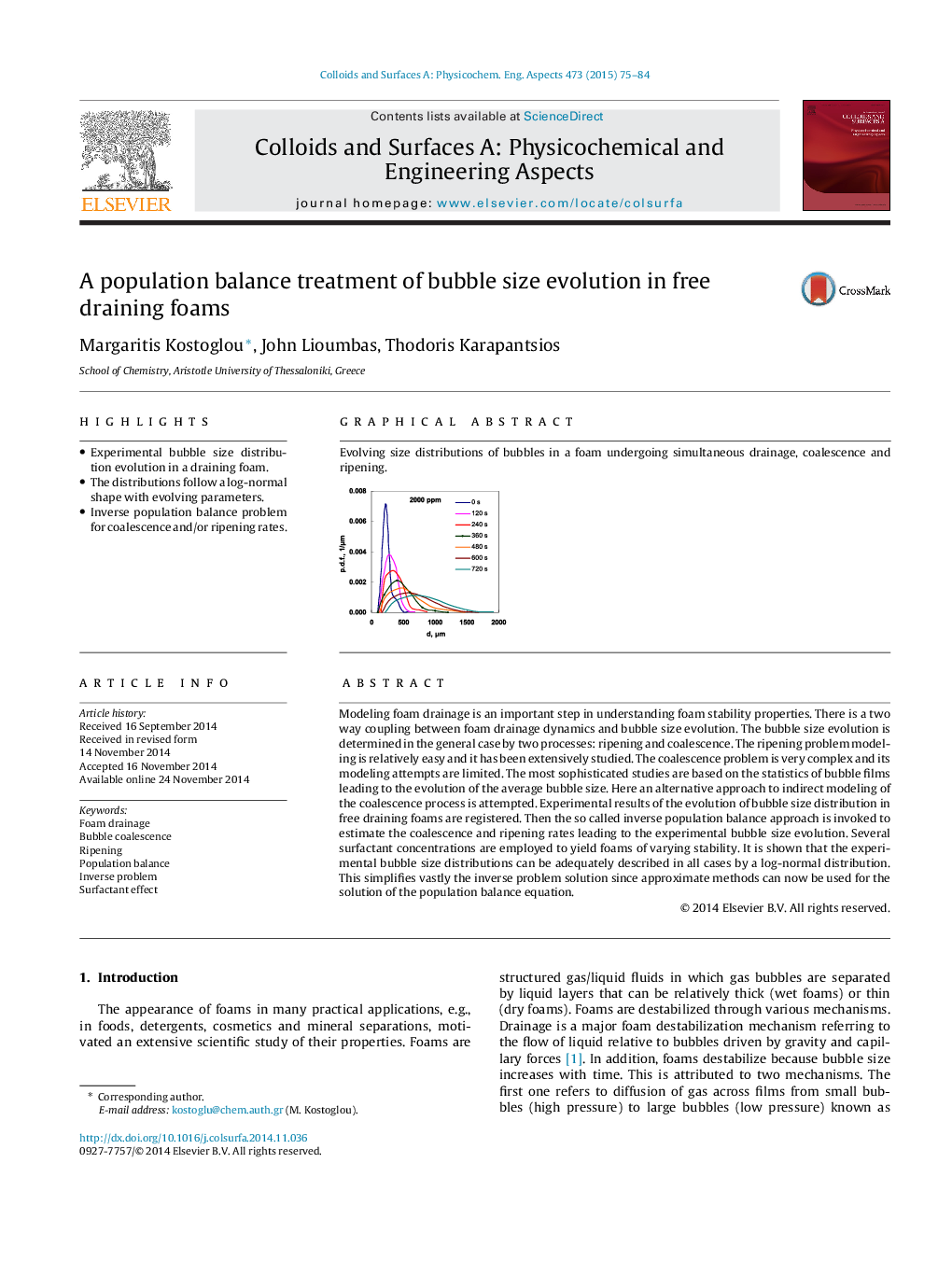| کد مقاله | کد نشریه | سال انتشار | مقاله انگلیسی | نسخه تمام متن |
|---|---|---|---|---|
| 592316 | 1453900 | 2015 | 10 صفحه PDF | دانلود رایگان |
• Experimental bubble size distribution evolution in a draining foam.
• The distributions follow a log-normal shape with evolving parameters.
• Inverse population balance problem for coalescence and/or ripening rates.
Modeling foam drainage is an important step in understanding foam stability properties. There is a two way coupling between foam drainage dynamics and bubble size evolution. The bubble size evolution is determined in the general case by two processes: ripening and coalescence. The ripening problem modeling is relatively easy and it has been extensively studied. The coalescence problem is very complex and its modeling attempts are limited. The most sophisticated studies are based on the statistics of bubble films leading to the evolution of the average bubble size. Here an alternative approach to indirect modeling of the coalescence process is attempted. Experimental results of the evolution of bubble size distribution in free draining foams are registered. Then the so called inverse population balance approach is invoked to estimate the coalescence and ripening rates leading to the experimental bubble size evolution. Several surfactant concentrations are employed to yield foams of varying stability. It is shown that the experimental bubble size distributions can be adequately described in all cases by a log-normal distribution. This simplifies vastly the inverse problem solution since approximate methods can now be used for the solution of the population balance equation.
Evolving size distributions of bubbles in a foam undergoing simultaneous drainage, coalescence and ripening.Figure optionsDownload as PowerPoint slide
Journal: Colloids and Surfaces A: Physicochemical and Engineering Aspects - Volume 473, 20 May 2015, Pages 75–84
